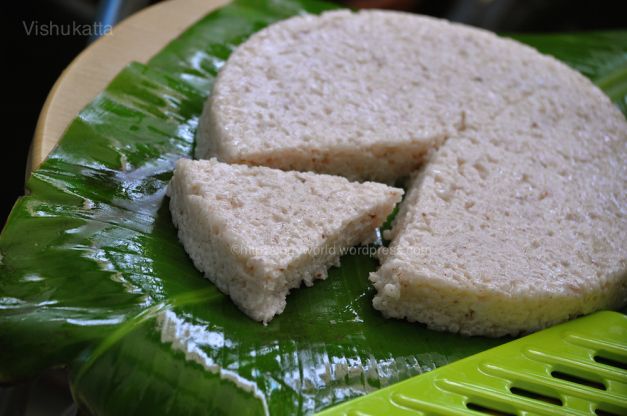Ahead of Vishu 2021, we look at the recognition of ‘Vishukkanji’ and ‘Vishukkatta’ and the way they’re ready at totally different households within the northern Kerala.
Golden yellow blooms of kanikkonna or Indian laburnum herald the arrival of the pageant of Vishu in April. Vishukkani, the custom of opening your eyes to witness the bounty of Nature, gold and God and the observe of receiving cash from elders as Vishukaineetam are all integral to the pageant. Then, after all, the enjoyment in bursting crackers and feasting on the sadya.
The pageant has many regional variations. The celebrations are at its zenith in northern Kerala. Vishukkanji and Vishukkatta, for example, are ready solely on the day of Vishu in these areas. If Vishukkanji, a gruel with rice and coconut or coconut milk is particular for Palakkad and a few elements of Kozhikode, Vishukkatta or rice cake cooked in coconut milk is a speciality of Thrissur district.
The well-liked preparation of kanji has puliyavara and cut up inexperienced gram cooked with any number of rice, reminiscent of puzhukkalari (pink rice), pachari (uncooked rice) or Ponniyari (full-boiled rice).
Both puliyavara and inexperienced gram are dry roasted. The former is pounded in order that the outer pores and skin, which is difficult, comes off. If you’re utilizing complete inexperienced gram, it’s higher to pound it after dry roasting the identical.
“Kanji won’t be tasty if the skin is not removed. It can cause indigestion as well. We keep puliyavara as one of the items in the Vishukkani and the same beans is used in the gruel,” says Lakshmi Kutty PP, a homemaker from Kallekulangara in Palakkad. Cumin, ghee or pepper may be added to up the style of the gruel.
“If jackfruit is available, we make puzhukku (raw jackfruit cooked with coconut paste and spices) as the side dish,” she provides.
A unique spin
Vishukkanji is normally served for breakfast on the pageant day. “In our tharavadu (ancestral home), it is served from 10.30 am onwards and is had for lunch as well. We don’t prepare the sadya,” says Manjula Jyothiprakash, a YouTube meals blogger (Spicy ‘N’ Easy) from Alathur in Palakkad.
Vishukkanji (Palakkad model)
- Cook uncooked rice (1/2 cup), Matta rice (1/2 cup), cut up inexperienced gram (1/2 cup, dry roasted and with pores and skin), and puliyavara or butter beans (2 tsp, dry roast and pound to take away the pores and skin) with salt (as required) and water (one litre) in a stress cooker. Switch off the range after six whistles. Add water to regulate the consistency and cook dinner. When the gruel boils, combine grated coconut (1 cup). Have it sizzling with a side-dish of your selection or pappadams or rice fritters.
- Courtesy: Spicy ‘N’ Easy
“I use both pachari (raw rice) and Ponniyari in equal quantities. Although some people cook the rice in coconut milk, I find it more tasty with grated coconut. In our house, we have stir-fried puliyavara as the side-dish. For this, the puliyavara has to be soaked overnight. Pappadams and rice kondattam (rice fritters) make it an even more tastier spread,” says Manjula.
However, neither puliyavara nor inexperienced gram determine within the gruel ready by Kozhikode-based Hemalatha Chandran. “I use nellu kuthari (par-boiled rice). Once the rice is almost cooked in water, ground cumin is mixed to it.
Then coconut milk is added (first add second extract or randaam paal followed by the thick first extract or onnaam paal) and boiled. Add salt and adjust the consistency. It is more like a jeeraka (cumin) kanji,” she says. The side-dish is stir-fried uncooked banana and lengthy beans.
Vishukkatta is made with pachari. It is cooked in randaam paal and water. “Once the rice is cooked and water dries, salt and the thick onnaam paal is added. Keep stirring it until it reaches the consistency of halwa. Grease a plate with some coconut milk and transfer the preparation on to it. Once it cools, it can be cut into pieces,” says Anitha Hari from Edamuttam in Thrissur.
Karayappam, a distinct model of unniyappam (deep-fried dumpling with rice flour, banana and jaggery) is made in elements of Kannur on Vishu day. “It has sugar instead of jaggery and is slightly bigger than the unniyappam. It is an offering for the deity when we arrange the Vishukkani,” says Indira Jayadas from Vadakara.
Although the Vishu feast is normally a vegetarian affair, non-vegetarian dishes are additionally served in a number of households. Pork is a favorite in some households in Thrissur and Ernakulam. In some elements of Palakkad district, a meat dish (rooster or mutton) with ash gourd is ready on the subsequent day of Vishu. “Meat masala and fish fry are a must on the leaf!

























